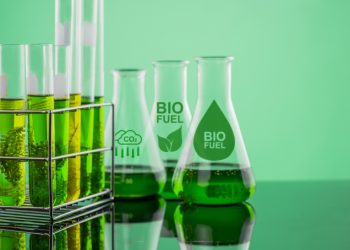A new initiative will hand cargo owners the opportunity to control and reduce the carbon footprint of their ocean freight, from the industry itself, and not from alternative mitigation schemes. The ‘GoodShipping Program’ is designed to accelerate low-carbon fuels in the marine fuel mix by driving ‘purchasing’ biofuel.
In particular, the GoodShipping Program empowers cargo owners and shippers to take control of their carbon emissions without having to rely upon the shipowner to change its fuel mix.
Moreover, as the program allows the cargo owner to purchase low-carbon, compatible and sustainable ‘drop-in’ biofuels, it makes achievable for the first time to mitigate carbon emissions within the industry, rather than through an alternative mitigation scheme. Until now, the only way ocean cargo owners could eliminate or substantially reduce the climate impact from ship operations was to select an energy-efficient carrier or to offset their carbon footprint outside the shipping industry.
“The big difference with other sustainability initiatives is that the GoodShipping Program actually changes the marine fuel mix, and thereby realizes a carbon reduction within the industry. Every ocean cargo owner can participate in the GoodShipping Program regardless of its volume, location, trade routes and existing contracts with carrier(s) or freight forwarders” explained Dirk Kronemeijer, CEO, GoodFuels, pioneering the GoodShipping Program.
However, Mr Kronemeijer noted the important role of the maritime industry at this initiative, as owners cannot drive the transition on their own.
The first Good Trade Lane connecting Europe to the rest of the world will be launched Autumn this year. The vessel will be powered-up in cooperation with GoodFuels Marine.
Further information may be found in the following video:
It is expected that emissions from shipping will increase with 50% to 250% by 2050, which would mean the sector becomes responsible for more than 15% of the total global CO2-emissions.

































































